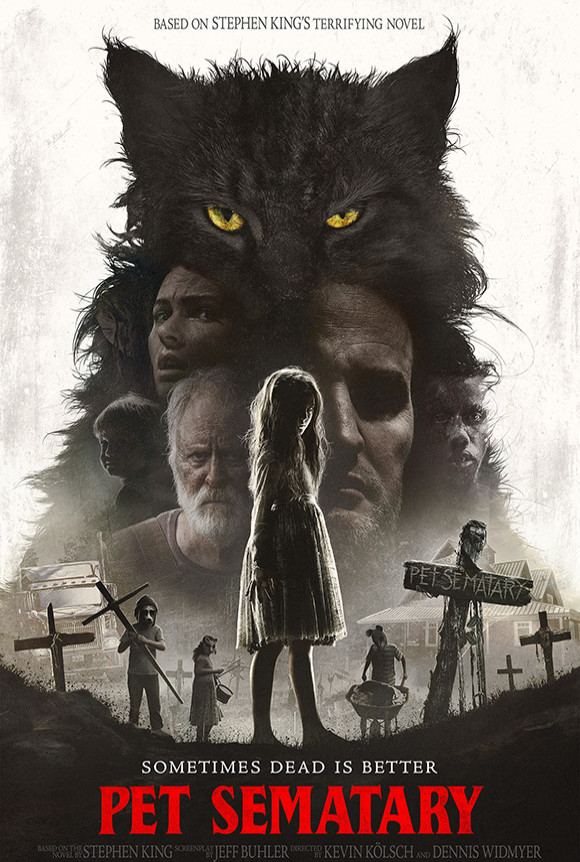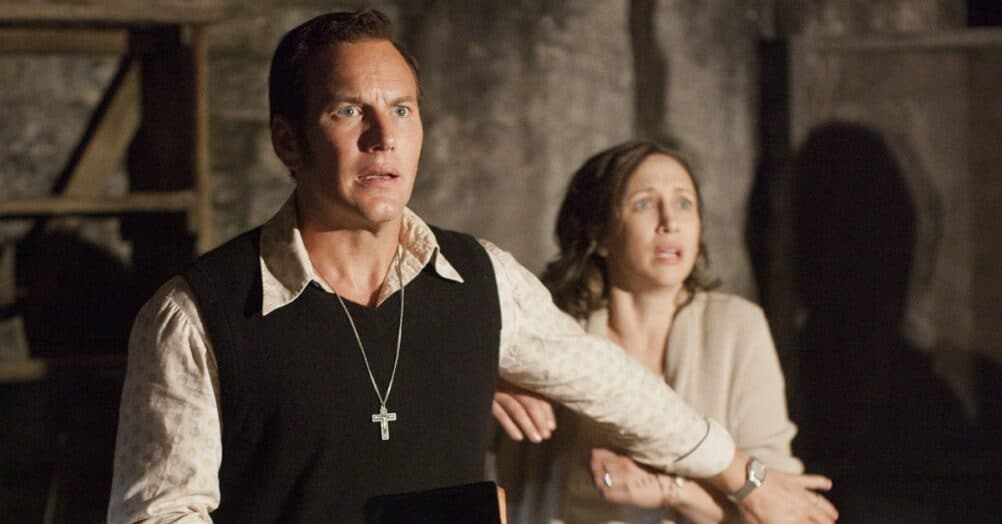Last Updated on October 12, 2021



Nice to see you again, fans of the cinema! This is the Face-Off, where two movies enter and both movies leave, but one leaves in a slightly better light. Yes, here we take two competitors and compare their key elements and see who comes out the champion. It's a fierce competition that results in blood, tears, and online arguments, but the more brutal the battle, the sweeter the victory.
This weekend audiences will get to witness the end of the story of the Losers' Club and their battle with the demon clown Pennywise in IT: CHAPTER TWO. Every time a new movie based on Stephen King's books comes out we as movie and book fans can't help but go through the canon of adaptations and reflect on which do the author justice in the best ways. There's so much material from him that you don't see too many remakes in the filmography, but two of the more notable remakes of previous King adaptations are no doubt the new CARRIE from 2013 starring Chloe Grace Moretz and Julianne Moore, and now this year's new take of PET SEMATARY with Jason Clarke and John Lithgow. These two remakes tried to show new sides of the King material, and now with this Face-Off we will see which new version validated their existences best, proving why audiences needed new takes on the classic stories.
Time to get on your best prom dress and grab your sharpest shovel, because we're about to dig up some remakes and kick start this blood bath of a bout!
Chloe Grace Moretz as Carrie White
Julianne Moore as Margaret White
Gabriella Wilde as Sue Snell
Portia Doubleday as Chris Hargensen
Judy Greer as Miss Desjardin
Alex Russell as Billy Nolan
Ansel Elgort as Tommy Ross
Barry Shabaka Henley as Principal Henry Morton
Jason Clarke as Louis Creed
Amy Seimetz as Rachel Creed
Jete Laurence as Ellie Creed
Obssa Ahmed as Victor Pascow
Alyssa Brooke as Zelda Goldman
with Leo, Tonic, Jager and JD as Church the Cat
and John Lithgow as Jud Crandall
Coming into CARRIE with the movies BOYS DON’T CRY and STOP-LOSS to her credit, director Kimberley Pierce was a solid choice to tackle a remake that wouldn’t be trying to be a carbon copy of Brian De Palma’s classic original. Whereas with that one we got a more horrific, gonzo take on the King material Pierce goes for a more sympathetic, grounded take. In that spirit, Pierce showcases her talent for crafting compelling drama, particularly between Moretz’s Carrie and Moore as her mother. Moore, in particular, shines in her role, and Pierce centers some of the most unsettling aspects on the character’s self-mutilation – which is one element that makes her the most fascinating character in the movie. But Aside from making some of the moments between mother and daughter seem more real and tense, Pierce doesn’t get quite as much mileage out of the rest of the story. The drama and development of the other teens don’t often rise above the feel of a typical teen drama – albeit with some more R-rated features. The first story from King to put him on the map, it doesn’t have the scope to make it a natural, cinematic tale, so that’s why De Palma’s style was key to making it something that could sear itself into your brain. Pierce’s work here, while showcasing some strong elements here and there, doesn’t hit the same highs and in stripping things down everything can’t help but feel a bit unsurprising. She shouldn’t be faulted for anything, as trying to remake one of the most iconic horror movies ever seemed an impossible task, but unfortunatley, her work fails to justify why the studios thought they should greenlight this in the first place.
How directors Kevin Kölsch and Dennis Widmyer get the win here is that in crafting a new take on PET SEMATARY, they go back to the more horrifying spirit of the King tale where the heaviness of the themes matches the bleakness of the actual content. There’s a grimness that comes with handling a story that deals so closely in death and grief, and from the start, the directors establish a tone that’s heavy and suitably evil. Unlike the original movie from Mary Lambert – which seemed less interested in everything leading up to the gonzo finale than the finale itself – Kölsch and Wildmyer set their movie apart immediately by casting a bleak pall over the entirety of the movie that lets you know this new version should leave you feeling uneasy at every turn. This makes the horror hit harder – especially scenes with the nightmarish Zelda – and makes the themes feel more palpable. Setting that bar so early does rob the movie's progressions of any surprise, however, as we sort of get the same level of dark and bleak across the whole runtime. Like CARRIE, King’s story is one of his most contained, exploring rich themes on a small scale. Lambert's work in bringing to that to life on the original movie is a bit of a mixed bag for me, in that the first half of the movie feels lacking in tension and thrills (aside from a pitch-perfect Fred Gwyne performance), all before going total gonzo in a final act that’s strange and terrifying. Where Kölsch and Wildmyer succeed in topping the original is that they tap into the darker nature of King’s work, and while they can’t make it come off as one of his most compelling works, the themes of how we deal with death feel more vicious and hauntingly explored, which is also in part to coming with a more memorable exploration Rachel's personal history. While Pierce failed to mine more from the story and feel like a necessary remake, the duo’s work here successfully crafted a departure from the predecessor that feels like a fresh take on the King material.
Initially written by Roberto Aguirre-Sacasa before being re-written by the original movie's writer, Lawrence D. Cohen, the script for CARRIE does a fine job bringing to the story to the screen – but just not always in ways that offer anything new to examine. There’s the inclusion of the social media angle, and how Chris can post the torment of Carrie on the internet. This angle is welcome in the modern age, but feels more like a visual detail, showing Chris recording the “shower incident”, and then having scenes where she posts it online and then showing it at the prom. This element is a perfect example of how Cohen’s final draft saw an opportunity to change things up but didn’t always dig as deep as it could’ve. The themes of bullying don’t often go beyond calling Carrie a “freak”, failing to more richly explore the nature of bullying in the modern era. Perhaps its Cohen’s history with the material (which included writing Broadway musical version) that made the story developments feel too similar to the original movie. Pierce’s direction also contributes to this, but perhaps she would’ve had more to work with if the script found new ways to explore King’s story beyond a more grounded take on Carrie’s relationship with her mom. If there is one more admirable development in the script it's the expansion of the roles for the other teens, with characters like Chris, Tommy and Sue having a bit more place in the story and the reasoning behind their actions getting slightly more time to develop. The drama and scenes themselves don't add much more weight in terms of execution on screen, but on a story front it gives a bit more dimension to those involved other than Carrie and Margaret. As for those two, Carrie is still a sympathetic character and her mom disconcertingly fanatical, and the best-written scenes are the ones with the two of them together.
Matt Greenberg still gets the story credit after writing a draft for the remake at the start of the decade, but Jeff Buhler is the one who gets sole screenwriting credit here. Another simple story on the surface, the script for the new SEMATARY hits many of the same beats as the original movie did, but there are a few notable changes that make the exploration of the themes feel more fleshed out. One way Buhler did this was making the role of Rachel Creed meatier, giving more time for us to see her horrifying past with her sister, thus making the angle have a bigger resonance across the movie. This doesn’t come at the sacrifice of Louis’ arc either, and it all better fleshes out the husband and wife’s perceptions on death. Then there’s the controversially-changed ending, which is a very bold move for such classic material. Not only did making Ellie the one to die and not baby Gage give the director’s more room to play on a visual front, but it makes the story feel more tragic, as Ellie is the one who you can link closer to as a character. This then takes the ending to more shocking places, and by the end, it's easy for fans to not love where Buhler took the story, but at least makes the movie stand on its own as a remake, and leaves room for examination in ways the original didn’t. As a remake, I can think of few better, bolder reasons for approaching popular material.
Bits:
Birth of Carrie
Shower Scene
Thrown in the Closet
Lifting the Bed
Using Powers on Mom
Mom in the Closet
Blood Bath
Prom Destruction
Car Crush
Margaret's Move
House Comes Crashing Down
Carrie's Grave
Lines:
Margaret: “They're all gonna laugh at you.”
—–
Sue: “Carrie had some sort of power. But she was just like me… like any of you. She had hopes, she had fears, but we pushed her. And you can only push someone so far before they break.”
—–
Desjardin: “Are you gonna get him a boutonnière, or are you just gonna pin a bloody tampon to his lapel?”
—–
Margaret: “You pray little girl, you pray for forgiveness!”
—–
Margaret: “These are godless times, Mrs. Snell.”
—–
Sue: “No! Carrie please don't hurt me.”
Carrie: “Why not? I've been hurt my whole life.”
Bits:
Procession
Pet Sematary/Meet Jud
First Memory of Zelda
Victor Pascow's Injury
The Vision
Dead Cat
Zelda and the Dumbwaiter
Burying Church
Church's Dead Bird
Ellie Get's Hit
Digging Up Ellie
New Ellie
Meet Your New Daughter
Ellie Kills Jud
Rachel Gets Twisted
Rachel Gets Stabbed
Pet Sematary Clasg
One Dead Family
Lines:
Jud: “Sometimes, dead is better.”
—–
Louis: “Hug your daughter.”
—–
Victor: “The ground is sour!”
—–
Louis: “I thought we could be a family, I wanted us to be a family, but we can't!”
Ellie: “But we can, Daddy. We can.”
—–
With his work on CARRIE, composer Marco Beltrami crafted a score that emphasized the sympathetic nature of Carrie and the more fantastical roots of the story. The result is something that can sound wistful and almost dreamlike when Carrie is starting to discover her powers, like in the pieces “Levitated Mass” and “Mind Over Matter”. These remind me of the kinds of horror scores that recall the work of Danny Elfman, where there is both a fantastical nature and sound of the score that reflects the strangeness on-screen. It’s not just fast-paced, jumpy pieces or bland, melodramatic tomes. Beltrami’s music makes the proceedings as entrancing as they are unsettling. But when he goes big and for the spine-chills, he indeed goes big, as you can hear in pieces like “Kill ‘Em All”, which has a booming, cascading sound that adds a profound, inescapable tragedy to the wrath of Carrie – and along with the sometimes iffy visual effects is the biggest cue that differentiates the scene from the original. The moment feels monumental here, rather than deeply trippy and nightmarish like De Palma’s version. Beltrami’s score sports a lot of effortless gliding between the sweet and the unsettling, and it’s perhaps the best element of a rather forgettable movie outside of some of the performances. That being said, it is one more element that – good as it is – can’t quite match the work from the competition.
If PET SEMATARY feels like a heart-sinking, evil-ass movie, a large – very large – reason for that is the music from Christopher Young. Heavy, haunting, bold and downright malicious, there is hardly a single track that doesn’t propel the terror on-screen to seriously unnerving areas. One of the best scenes and pieces of music to keep you up at night is the first scene featuring the twisted Zelda, with the piece “Scream for More” playing over. Echoy and dark, all before laying on the relentless screeches, his work here recalls similar work on the movie SINISTER, which is yet another masterful piece of horror music from a man who knows how to set music to evilness. If the goal was to suck viewers into an inescapable spiral of dread, then the music is the biggest triumph the movie has to offer. So much of the movie hinges on the mood and the mythology of the setting, and in crafting a score that feels so hellish and rooted in a history that goes back far further than when the Creed family showed up, Young set the tone for a dark, gripping new take on the King tale.
As I said in the “Direction” section, Pierce made it so the most unsettling scenes came from Moore’s Ms. White, whether it be how she scratches and cuts herself or just her general, crazy-person existence. Starting things off a bit differently than the original, we see White wrenching as she gives birth to Carrie, coming ever so close to stabbing the child the death. I mean, there’s little as grim as stabbing a baby with a pair of scissors, so some props do go to the script and Pierce for working that into a story that isn’t exactly scary or violent until the end. The shower scene is one of those creations that can’t be anything but unsettling to watch – the image of a bloody Carrie pleading for help and everyone responding in turn with mockery. But it’s also one De Palma and star Sissy Spacek executed perfectly the first time around, so the moment can’t help pale in comparison. The movie gets a lot of the more consistent tension from Moretz and Moore being around each other — that eerie, religious iconography littering their house. But nothing else until the end keeps things on that level. Again, it’s just impossible for the prom scene and the resulting chaos to hit the same high as the original, this time around made questionable by some wonky visual effects that can take you out of the sheer viciousness of Carrie’s wrath. More room to be bloody and nasty, Pierce does revel in the deaths of characters like Chris and her boy toy, a particular *chefs kiss* moment of violence being Chris’ head through the windshield. But perhaps this is too little too late. The rest of the movie lacks in the style to drive home the horror depths of the story, going more for tragedy and drama this time around.
This new take on SEMATARY is, head to toe, an evil f**king movie. It’s dour and there’s always an aura of doom hanging in the atmosphere, so even when the scares themselves rely too much on the “jump” side of things, the build-ups can be deeply unsettling. So much of this is thanks to Christopher Young’s haunting score, as well as the presence of nightmarish figures like Zelda and undead Ellie. Zelda is such a terror, and the directors get more out of her by making her presence have a more lasting effect – the sounds of scraping across the floorboards almost scarier than her actual appearance. Like the original, the directors realized kids are inherently creepy, and Ellie is pushed to more straight-up evil lengths than Gage went in the original version. Ultimately, the remake's biggest success is how endlessly bleak it feels compared to not just the original put other King adaptations in general. It deals in death and menace so heavily that it doesn’t give you a moment to feel anything but uneasy, and while that can leave the tone feeling monotonous, as a horror movie, it can make for a welcome, plentiful dose of dread.
Praise:
Rotten Tomatoes: 50% (44% Audience Score)
IMDb: 5.9
Metacritic: 53 (6.1 Audience)
$35 million domestic ($84 million global)
Praise:
Rotten Tomatoes: 58% (35% Audience)
IMDb: 5.8
Metacritic: 57 (5.8 Audience)
$54 million domestic ($112 million global)
Remaking acclaimed classics is never a good move, because why do it again when it was done so well the first time? The 2013 remake of CARRIE stands as a prime example of this by offering one or two welcome new treatments to the story and a solid score, but in no way justifying its existence, let alone alongside the De Palma original. The themes of bullying and parenting are present in this new version, but it lacks any style or impact to make those themes resonate as well as they should, removing the story of most of its tension and strangeness. This is why when compared to a remake like PET SEMATARY — which is by no means perfect — it can't help but feel like a wasted effort. The new take on the pet-heavy King tale didn't take the story in many wild new directions (despite an interesting change or two), but it brought it to life with more terror and dread than the original, which is just how this story of how we deal with the nature of death needs to be told. The performances are solid, the atmosphere is palpable, and Christopher Young once again steals the show with a spine-tingling score to drive it all home. What this bout proves is that if you're going to rehash material audiences have already seen on-screen, you better come at it with a fresh enough perspective to make it worthwhile. If you don't, all the blood and telekinetic chaos in the world is going to fall on checked-out minds.




















Follow the JOBLO MOVIE NETWORK
Follow us on YOUTUBE
Follow ARROW IN THE HEAD
Follow AITH on YOUTUBE